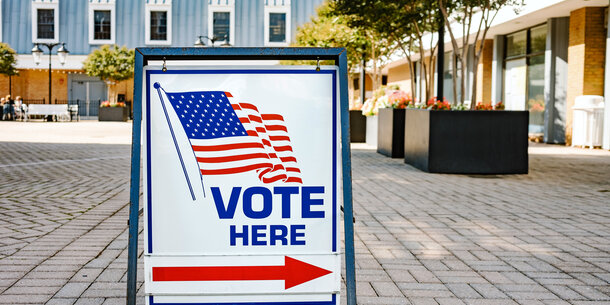Update: The John R. Lewis Voting Rights Advancement Act was reintroduced in the House on March 5, 2025. Learn more about it here.
On January 20, 2022, the House passed an omnibus voting rights bill that included the John R. Lewis Voting Rights Advancement Act, an effort to restore and revitalize the Voting Rights Act of 1965. The bill is now before the Senate, where despite bipartisan support it faces an uncertain future due to the filibuster.
The Voting Rights Act was the most successful civil rights legislation in our country’s history until the Supreme Court gutted the law in Shelby County v. Holder in 2013. The Court further weakened the law’s protections against voting discrimination in another case in 2022 in Brnovich v. Democratic National Committee.
Now, we are in the midst of a crisis. The nation faces a wave of voting restrictions and redistricting abuses, both of which often target communities of color. We need a full-strength Voting Rights Act to prevent this suppression from happening and root it out quickly where it does.
The John R. Lewis Voting Rights Advancement Act would restore the law to full strength, in part by once again requiring states with histories of voter discrimination to receive approval from the Department of Justice or a federal court before enacting voting changes. Nonetheless, Republicans in Congress and their allies in the states oppose it. These opponents have now made their case in several congressional hearings, including an October 6, 2021, hearing before the Senate Judiciary Committee.
They do not — and cannot — offer reasoned explanations for why the law’s protections are any less important now than they were in 2006, when it was reauthorized with overwhelming bipartisan support in Congress. Instead, they offer a combination of misinformation and a regurgitation of the criticisms made against the Voting Rights Act in 1965. Their claims are wrong, and many rely on blatantly false statements.
MYTH: The bill is a federal takeover of elections
Sen. Ted Cruz (R-TX) called the John Lewis Voting Rights Act “a power grab” designed to let “unelected bureaucrats . . . strike down . . . laws enacted by democratically elected legislatures in the states.” By his telling, “one unelected bureaucrat” can “say to hell with democracy” and strike down laws on a whim.
This argument is incorrect for three reasons. First, the DOJ would play the same role under the John Lewis Voting Rights Act that it played so successfully for almost five decades under the Voting Rights Act. Criticizing the DOJ’s authority under the bill is just a revival of an argument made against the original Voting Rights Act.
Back in 1965, segregationist senator Strom Thurmond of South Carolina similarly argued that the bill would cause “despotism and tyranny” if passed into law. Not only is it wrong to describe the restoration of a decades-old practice a “federal takeover,” but it is nonsensical to claim that it undermines democracy when there is universal agreement that the preclearance process was tremendously successful at rooting out discrimination and improving our democracy. Even Senate Judiciary Committee Ranking Member Chuck Grassley (R-IA) conceded that preclearance “worked wonders.”
Second, a state or subdivision does not have to involve the DOJ in the preclearance process. It can bring its case directly to a federal court. If a state seeks approval from the DOJ and the DOJ denies the request, the state can still bring its case to court.
Third, the DOJ’s review authority is limited. It must consider only whether the proposed change to voting rules would result in discrimination against minority voters — a result that would violate the Constitution or federal law. The department cannot simply block laws it does not like. The evidence bears this out: the DOJ approved 99.86 percent of submissions when preclearance was in effect.
MYTH: Preclearance is a major burden
According to Former Virginia Secretary of State Ken Cuccinelli, preclearance creates an “extraordinary burden” on states and counties because “it covers the smallest of trivia.” He asserted that even moving a polling place down the hall would trigger extensive work for a state to clear the DOJ review.
In reality, preclearance is not a heavy lift for the states. Attorneys general in several previously covered states, including Mississippi and North Carolina, have submitted friend-of-the-court briefs explaining that the process is “streamlined to minimize the burden,” requires materials that “are ordinarily both readily accessible and easy to assemble,” and takes “only a few minutes to prepare.” Submissions often received approval on nothing more than these simple information sheets. Again, 99.86 percent of proposed changes were precleared in the past.
DOJ staff work cooperatively with local officials, and most submissions require only one or two pages of documentation. Smaller changes like the movement of a polling place require almost no documentation and are routinely approved. The John Lewis Voting Rights Act further streamlines the process in certain instances, providing for expedited consideration of changes that respond to exigencies such as natural disasters.
MYTH: States will be covered by the law as a result of weak claims or unfounded lawsuits
The bill’s opponents distort how states are brought into coverage. Todd Rokita, Indiana’s secretary of state, told the Senate that temporary rulings or cases on appeal count towards coverage and the bill would “incentivize frivolous lawsuits.” Cuccinelli alleged that merely filing lawsuits could bring states into coverage. Grassley attempted to muddy the waters by saying that the bill’s formula for deciding who is covered rests on “vague notions.”
Even a cursory skim of the Senate bill reveals these claims to be misrepresentations. The bill clarifies that only a final outcome (such as a court judgment or certain types of consent decrees and settlements) that is not overturned on appeal counts. Only final resolutions that hold that a state’s voting law or practice violated the Constitution or federal laws against race discrimination in voting contribute towards coverage.
Suggesting the bill incentivizes frivolous litigation is not just speculative — it is divorced from the reality of federal litigation. First, winning a final judgment in federal court is extremely difficult. Judges do not find that a state or locality violated the law unless plaintiffs put forth substantial evidence proving the allegations.
Second, given how difficult these cases are to win, there is nothing to gain from bringing a weak claim. Litigation is costly and time-consuming. Third, defendants with strong cases have no incentive to settle frivolous claims. Their incentive is to continue the case to victory, which is a strong deterrent against future challenges.
Finally, court rules such as financial sanctions on those who bring frivolous cases ensure that prospective litigants will carefully weigh the validity of claims before filing.
Perhaps most importantly, a state has to rack up at least 10 of these violations of voting laws before it is covered. That is far too high a bar for litigants to be able to game a state into coverage.
MYTH: We have eliminated the discrimination underlying the need for preclearance
Opponents of the bill argue that racial discrimination in voting is a thing of the past. Grassley claimed that we “recently had record turnout for minority voters” and Rokita stated that “there is no evidence that voter suppression is on the rise.” Cuccinelli neatly summed up his view for the committee: “America has — thankfully — left its days of racially suppressive voting laws behind.”
Sadly, these views simply do not reflect the reality of America today, where racism and voter suppression are alive and well. Notwithstanding the Republicans’ cherry-picked data, participation by nonwhite voters still lags behind that of white voters. While the 2020 election featured record turnout overall, only 58.4 percent of nonwhite voters cast ballots compared to 70.9 percent of white voters, a turnout gap of 12.5 percent. This turnout gap has been growing since 2012 — the last presidential election before Shelby County — when it reached its narrowest at 8.0 percent. And the gap is growing faster in states likely to be covered by preclearance than in the rest of the country.
The bill’s opponents also ignore that laws and practices designed to suppress voters of color remain far too common. There was ample evidence of voter suppression and discriminatory conduct in the 2020 election cycle. Georgia purged hundreds of thousands of disproportionately nonwhite voters from the rolls, North Carolina rejected Black voters’ ballots almost twice as often as white voters’ ballots, and Texas allowed only a single drop-off location for mail ballots per county, mainly impacting its large, diverse counties. There were instances of race-based voter intimidation, harassment of minority election observers, and threats to election officials.
Voter suppression remains on the rise today. In 2021 alone, at least 19 states enacted at least 34 laws that make it harder to vote, while at least 13 restrictive voting bills have been pre-filed for 2022 legislative sessions and no fewer than 152 restrictive voting bills will carry over from last year. Four of the restrictive laws that passed in 2021 are “monster” voter suppression packages that include dozens voting access rollbacks. Two of these monster laws are in states that would be covered by the version of the John Lewis Voting Rights Act before the Senate (Texas and Georgia) and a third is in a state (Florida) that would have been covered by the House version of the bill. (The fourth is in Iowa).
In 1965, states and localities suppressed the votes of people of color with poll taxes and literacy tests. Today, we see insidious discrimination in new forms. We see it when a state bans 24-hour voting in response to its widespread use in a heavily nonwhite county. We see it when a state sets limits on drop boxes that make them harder to access after nonwhite voters used them in droves. We see it when a legislator says we should focus on the “quality” of voters over the quantity.
• • •
The critiques offered by opponents of the John Lewis Voting Rights Act are flimsy and transparent. The subtext comes through loud and clear. The critics haven’t identified flaws in the bill — they oppose the Voting Rights Act, the crown jewel of the civil rights movement that transformed our democracy.



